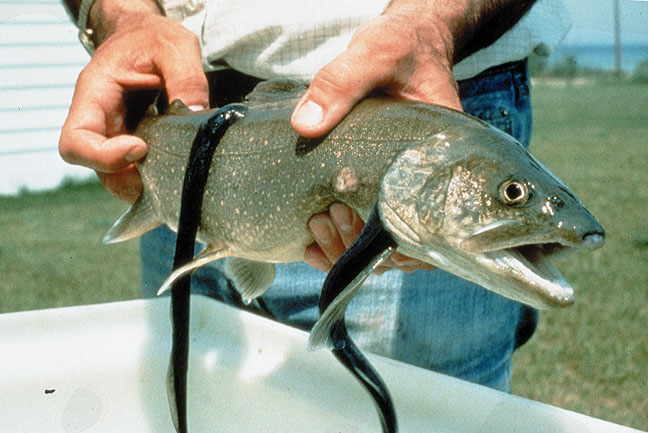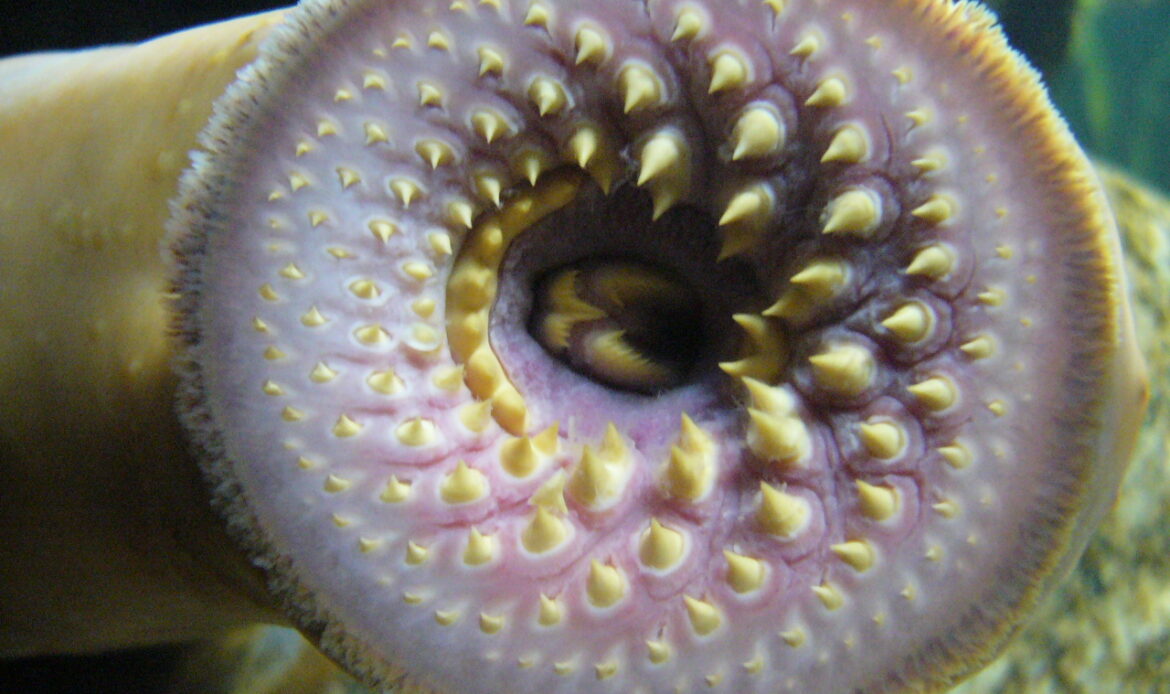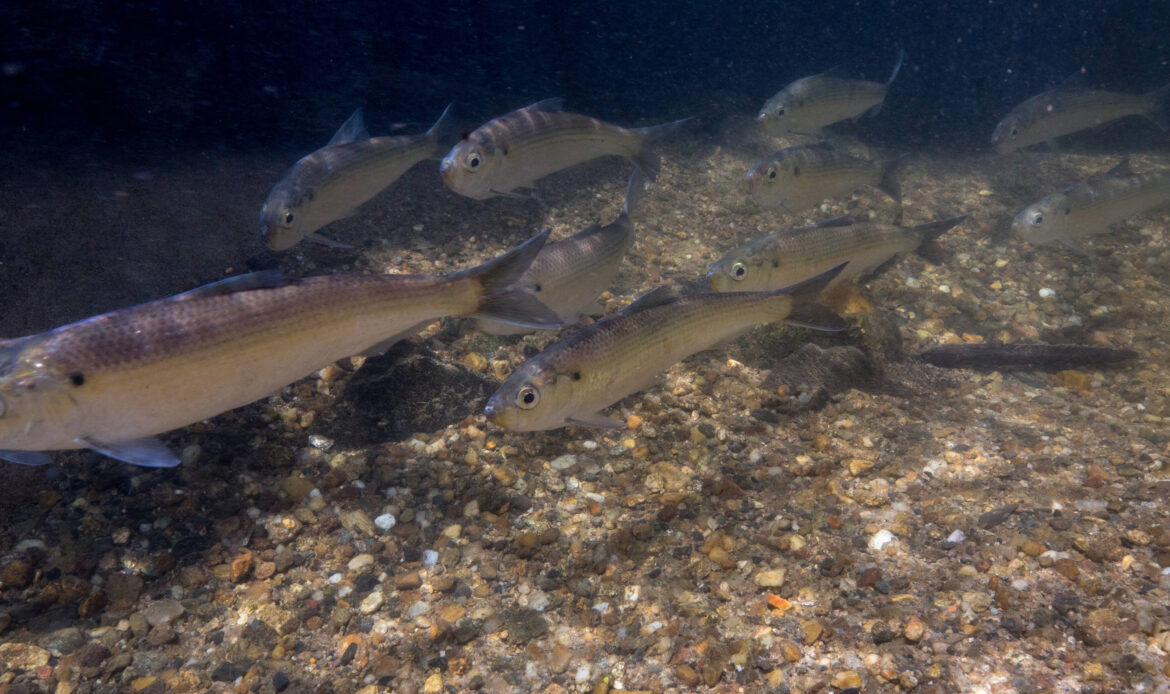Early Pilgrims
“The Great Lakes is one of the most invaded aquatic ecosystems in the world.”—Derek P. Crane and Donald W. Einhouse in the Journal of Great Lake Research
Our Lazarus Lake series briefly explained the story of Lake Erie’s transformation: From freshwater Shangri-La, to a barren symbol of humanity’s environmental failures, to arguably the greatest walleye fishery the world may ever experience—all in the course of a few generations. That series focused on three primary drivers of change that brought about Erie’s fall in the late 20th Century: overfishing, habitat loss, and pollution. While those three factors are crucial to understanding the widespread shifts in Erie, another complex issue lurks beneath the surface.
They go by many names, but you probably know them simply as “invasives”.
During the same period we covered in Lazarus Lake, the Great Lakes were inundated by non-native species, and Lake Erie has been the hardest hit of all. An estimated 185 different non-native species have established populations in Erie.
These incidentally introduced organisms didn’t intend to colonize America’s Great Lakes. Alewives, gobies, and zebra mussels didn’t plan a multi-species trans-Atlantic assault on our waterways. Their presence, like just about all the major changes to Lake Erie, is the result of human intervention.

Part One will cover the first wave of non-native species to hit the Lakes—how they got there, and the profound shifts their presence made to the ecosystems. Part Two will tell the story of non-native species that were intentionally dispersed—a desperate attempt to rebalance the system that inadvertantly created the Great Lakes sport fishing culture and infrastructure we enjoy today. Part Three will cover the most recent waves of invaders and explain how the ecosystem, and its sport-fisheries are adapting to all these introduced populations.
Sea Lampreys, aka Vampire Fish
The first infamous invader is, perhaps, the most insidious. Sea lampreys—sometimes called vampire fish—are cartilaginous fishes native to the Atlantic coasts of North America and Europe. They kind of look like eels (though they’re not) and attach themselves to other fish with suction cup mouths before using their concentric circles of teeth to “rasp” away at their hosts’ skin until they reach the blood and other fluids on which they feed. Not surprisingly, lampreys haven’t caught on in the home aquarium scene, but if you can get past the whole eel-looking, vampiric parasite thing, they’re pretty incredible creatures.

In the early-1800s, shipping canals allowed sea lampreys to invade Lake Ontario. Niagara Falls prevented them from getting into the other Great Lakes simply because sea lamprey can’t jump—more on that later. Twenty years after the Welland Canal was deepened to allow cargo ships to bypass Niagara Falls in 1919, sea lamprey had colonized all the Great Lakes. They adapted well to inland oceans and the native forage. Fish rarely survive an encounter with a sea lamprey, and though they are willing to suck the blood of a variety of different hosts, lake trout proved especially vulnerable. Within a couple of decades, lake trout all but disappeared across the Great Lakes, casualties of a combination of lamprey predation and the effects of another invader that we’ll explain shortly.
In the early 1960s, The Great Lakes Fisheries Commission started using lampricides (chemicals that kill lamprey larvae) in the rivers, streams, and creeks where they spawn. These chemicals have proven highly effective, but they’re expensive to manufacture and deploy. They also don’t give researchers and managers any sense of how many lamprey are living and reproducing in a system. The Fisheries Commission has recently started erecting barriers across spawning tributaries. Other fish species, like salmonids, can leap over these barriers, but like we said earlier, sea lampreys can’t jump.
Since their peak in the ‘50s and ‘60s the Great Lakes’ Sea lamprey population has decreased by an estimated 90%, which has helped lead to the successful recovery of lake trout in some areas. Unfortunately, lake trout have not made a meaningful recovery in Lake Erie, yet, but lamprey numbers are well under control.
The lamprey problem, however, isn’t solved. Complete eradication of lampreys is probably impossible, which means that humans will have to continue controlling their numbers in perpetuity to prevent them from coming back. And lampreys are not the only invasive Atlantic fish that need to be kept in check.
Plague of Alewives
Alewives—small, silvery oceanic fish—arrived in Lake Erie through the same shipping canal as sea lampreys at about the same time. Though Alewives don’t appear nearly as menacing as sea lampreys—six-inch, generic-looking baitfish don’t cause people to recoil like vampiric, snake-fish—they wrought at least as much destruction to ecosystem balance. Though alewife populations go through huge boom and bust cycles, their ability to reproduce quickly and the sheer quantity of food they found in the Great Lakes caused their numbers to skyrocket from the ‘30s to the ‘60s.

Non-native fish often pose problems for endemic species by competing for food with and preying on their new neighbors. Alewives do both…and more. Alewives consume a great deal of the zooplankton that local baitfish populations, like emerald shiners, depend on. Fast-growing alewives also eat the eggs, larvae, and fry of larger but slower-growing fish like lake trout. When lake trout finally get big enough to return the favor, they do feast on the abundant alewives. Unfortunately, alewife tissues contain an enzyme that breaks down thiamine in lake trout, a vitamin that’s essential to successful spawning. So, even when lake trout turn the tables and chow down on the invaders, their populations still shrink.
By the mid-60s, the Great Lakes in general, and Erie in particular, were in dire straits. Some estimates claimed that alewives made up 90% of the remaining biomass in the Lakes. Just about everything else was fished out, preyed upon, or outcompeted. That’s when a man named Howard Tanner was offered the job of fisheries chief in his home state of Michigan.
Come back for part two of this series to learn about Howard Tanner’s mad genius idea that sparked a new fishery, created recreational fishing culture as we know it, and may have saved the Great Lakes from alewives. It’s also putting modern fisheries managers in a difficult bind.




